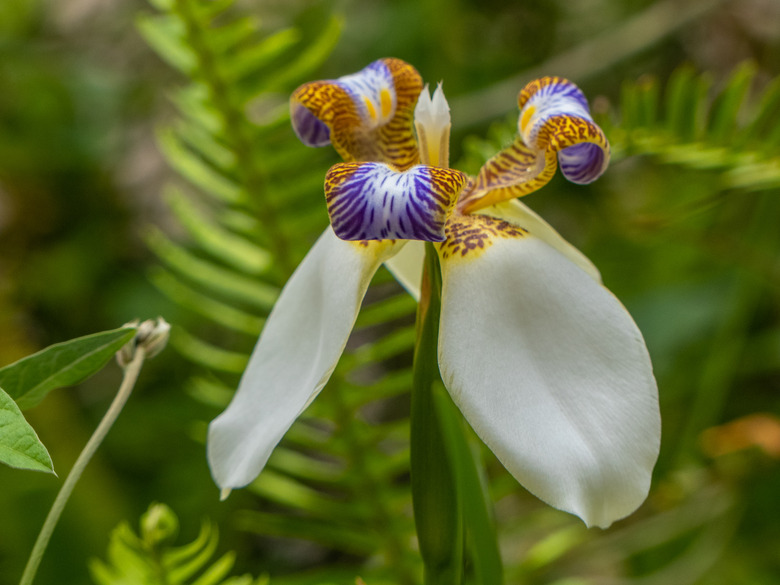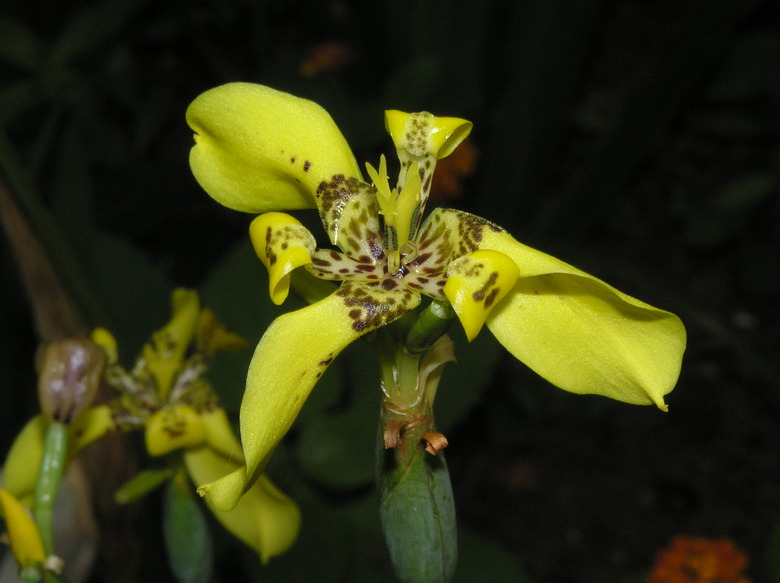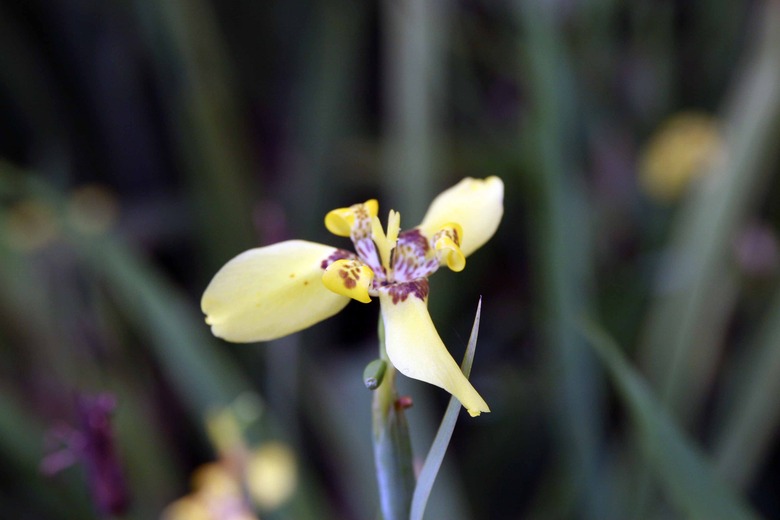How To Propagate Walking Iris
The common name "walking iris" is often used to refer to two distinct types of plants in the Iridaceae, or iris, family that propagate by plantlets that form at the top of the flower stalks. These plantlets may root on their own, or they may be removed from the parent and replanted.
Walking iris plants may be grown outdoors or indoors. They are considered a type of "pass-along" plant, because they are often shared by home gardeners instead of being purchased commercially.
Types of Walking Iris
Two different types of irises are known as "walking irises," although some botanists conflate all of these plants into the same genus. The flowers of the walking iris are short lived, lasting only for a day, but these plants bloom repeatedly from spring to fall.
Walking irises are perennials that are native to Central America and South America. These plants are sometimes referred to as apostle plants because of an unproven theory that these plants do not produce flowers until 12 leaves have developed. They are also known as fan irises and poor man's orchids.
Neomarica Species
Some walking irises are in the genus Neomarica. Not all species in this genus are considered walking irises because their stems do not bend over.
Those that are considered walking irises include Neomarica gracilis and Neomarica longifolia, which are hardy in USDA plant hardiness zones 8 to 11. Neomarica gracilis has white flowers with blue and brown markings, while Neomarica longifolia has yellow flowers and mahogany-colored markings.
Trizemia Species
"Walking iris" can also refer to Trimezia martinicensis, a species that has yellow flowers and is hardy in U.S. Department of Agriculture plant hardiness zones 10 and 11. Outside of its hardiness range, Trimezia martinicensis can be grown in containers and overwintered indoors.
Walking Iris Propagation
Walking iris plants develop new plantlets at the top of the flower stalks. Toward the end of the growing season, the flower stems bend toward the ground, which allows the plantlets to root and form new plants. **This process is repeated yearly, which results in the plants moving through the landscape, hence the "walking" moniker.**
Walking irises also spread by clumping rhizomes that can be divided to create new plants.
Tip
Walking iris plants can be propagated by the plantlets that grow atop the flower stalks or by dividing the rhizome roots.
If you are growing walking iris indoors in containers, you can snip off the flowering stem when it begins to bend and allow it to root in a pot of moist soil.
Walking Iris Care
Walking iris plants work well in shade gardens in clusters as well as along walking paths. They like moist soil, especially during periods of dry weather, but they can adapt to a variety of soil conditions.
Indoors, walking irises should be kept in a bright location. However, **as shade-loving plants, they should not receive direct sunlight.** In containers, walking iris plants require frequent watering to prevent the tips of the foliage from drying out.
References
- University of Florida IFAS Extension: Walking Iris
- North Carolina State Extension: Trimezia
- Texas Master Gardener: Walking Iris or Apostle Plant
- Pacific Bulb Society: Neomarica
- University of Arkansas System Division of Agriculture: Plant of the Week: Walking Iris
- University of Florida IFAS Extension: Plant Profiles – Walking Iris


